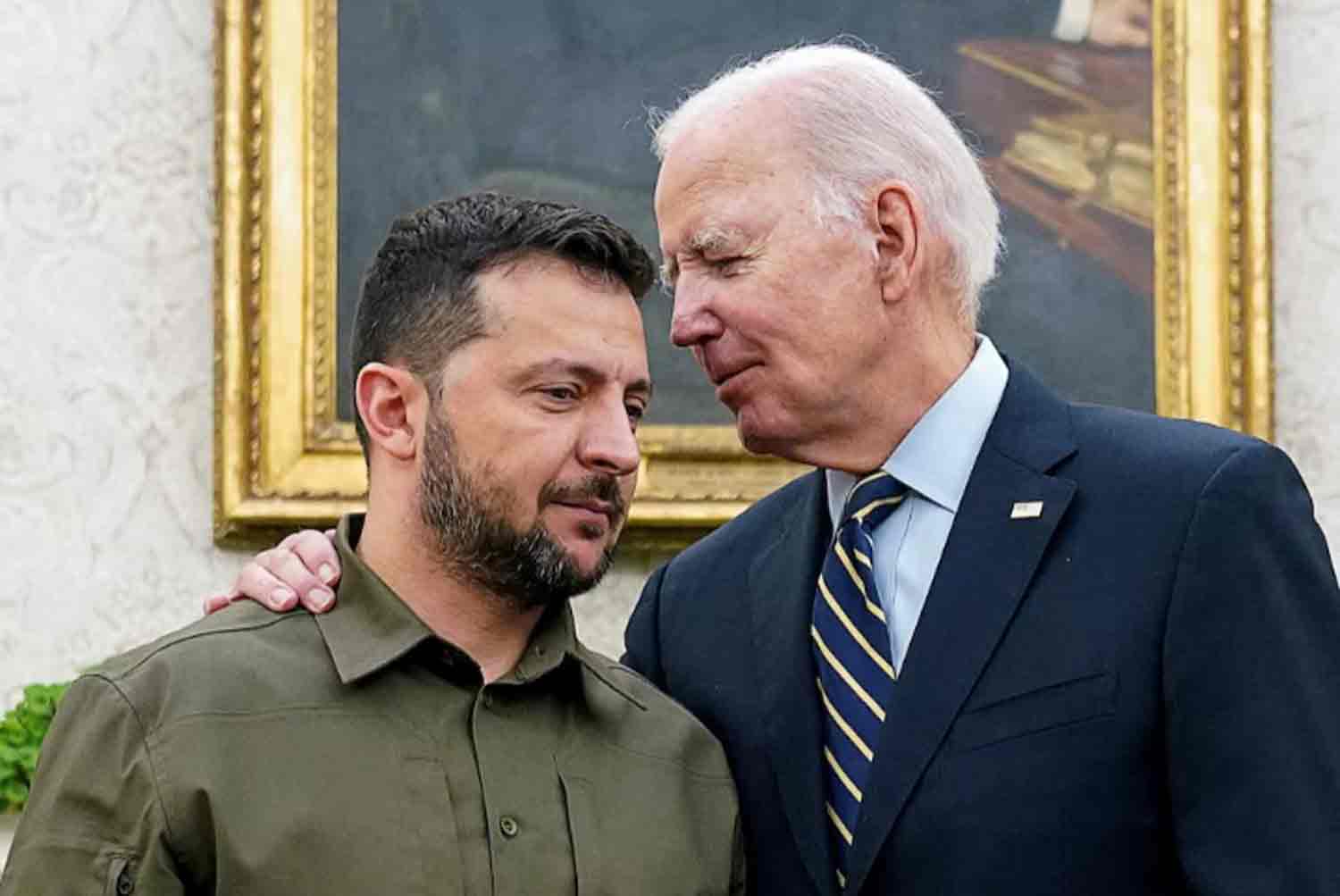US policy regarding Russia and Ukraine has consistently been a pivotal and contentious element of American diplomatic efforts. In 2016, while still a candidate for the presidency, Donald Trump openly advocated for the normalization of relations with Russia. However, these aspirations encountered significant resistance, particularly from the outgoing Barack Obama administration.
This historical backdrop highlights how current administrations can leverage transitional periods to reinforce their policies, thereby complicating the ability of their successors to implement changes. Now, as Trump asserts his goal to resolve the conflict in Ukraine “within 24 hours” upon his return to the White House, he confronts considerable challenges from Joe Biden’s administration, which can utilize the time remaining until January 2025 to further entrench its existing policies.
Obama, Trump, and Russia
Following Donald Trump’s victory in the November 2016 presidential election, the Obama administration undertook several measures that greatly hindered the new president’s efforts to improve relations with Russia. Throughout his campaign, Trump had stressed the importance of fostering closer ties with Moscow and reassessing America’s stringent foreign policy. However, the actions taken by Obama during the transition period, from November 2016 to Trump’s inauguration in January 2017, were designed to reinforce an anti-Russian stance, making any subsequent changes challenging. These actions established a “legacy” that posed both political and strategic difficulties for Trump to navigate, resulting in much of his rhetoric regarding rapprochement with Russia remaining unfulfilled.
A significant aspect of the strategy was the escalation of diplomatic tensions. In December 2016, the Obama administration implemented a new set of sanctions against Russia, citing accusations of cyberattacks targeting the US Democratic Party and interference in the electoral process. These sanctions involved freezing the assets of Russian entities and imposing restrictions on business interactions. Concurrently, 35 Russian diplomats were expelled from the United States, and two diplomatic facilities were shut down, which Washington claimed were utilized for espionage activities.
In addition to the sanctions, the Obama administration vigorously promoted the narrative of Russian interference in elections within the public sphere. High-ranking officials issued official statements, intelligence reports were released, and numerous media appearances contributed to portraying Russia as a threat to American democracy. A crucial part of this initiative was the submission of extensive documentation to Congress and intelligence agencies, which, according to Obama and his administration, substantiated claims of Russian interference. This narrative established the “Russian threat” as a dominant topic in political and public discussions, significantly limiting Trump’s ability to engage with the Kremlin. Any efforts by the incoming president to foster better relations could be perceived as jeopardizing national security or even as endorsing Moscow’s “hostile actions.”
During this time, Obama also enhanced support for Ukraine, providing additional financial and political assistance. This action reinforced a foreign policy strategy focused on countering Russia in Eastern Europe, symbolizing a commitment to a hardline stance that involved supporting adversaries of Moscow. Moreover, the Obama administration bolstered ties with NATO allies, underscoring a dedication to collective security. This created further obstacles to any potential policy shifts, as any departure from the hardline approach could be interpreted as a dilution of US commitments to its allies.
Significant focus was placed on exerting political pressure directly on Trump. The Obama administration either directly or indirectly facilitated investigations into potential links between Trump’s team and Russia. This topic received extensive media coverage, contributing to the portrayal of the new president as someone whose decisions could be swayed by foreign influences. Such an atmosphere rendered any attempts at improving relations with Moscow particularly perilous for Trump amid domestic political rivalries.
In summary, the actions taken by the Obama administration during the transition were calculated and designed to entrench a stringent anti-Russian stance. The introduction of new sanctions, diplomatic initiatives, bolstered support for Ukraine, and the promotion of the “Russian threat” narrative established significant obstacles to any potential policy changes. Even if Trump intended to reassess relations with Russia, he encountered considerable limitations on both foreign policy and domestic levels. The political, media, and institutional climate fostered by Obama effectively hindered the new president’s ability to promptly pursue his objectives for normalizing US-Russia relations. This situation illustrates how an outgoing administration can leverage the transition period to solidify its legacy and restrict the actions of its successor.
Biden’s strategies to counter Trump’s Ukraine policy
As we approach 2024, with Trump having secured the presidential election once more, his ambitions for swiftly de-escalating the conflict in Ukraine may encounter formidable opposition from the current administration. Biden has various strategies at his disposal to curtail Trump’s ability to realize his foreign policy goals.
The Biden administration has the opportunity to bolster military assistance to Ukraine by expediting the delivery of arms and establishing long-term contracts. Currently, Washington is supplying Kiev with a diverse array of weaponry, including sophisticated systems like air defense units and long-range missiles. By securing long-term agreements for these supplies, the U.S. can ensure ongoing military support for Ukraine, even in the event that Trump seeks to curtail it following his potential inauguration. A preliminary measure in this regard was the authorization for Ukrainian forces to utilize American weaponry for operations targeting Russian territory, particularly in the Kursk Region.
Additionally, financial assistance to Kiev could be enhanced through substantial aid packages. This strategy would allow the Ukrainian government to maintain its operations and military efforts, even if the incoming administration opts to scale back support. These financial allocations could be structured in such a way that their withdrawal would necessitate a complex approval process by Congress, thereby complicating any attempts by Trump to reduce aid.
Furthermore, a strategic approach could involve forging political agreements with key U.S. allies in Europe. Biden can enhance collaboration with NATO and EU nations, including establishing long-term commitments to support Ukraine. Such agreements would not only amplify EU engagement in the conflict but also exert additional pressure on Trump should he attempt to alter the current strategy. Abandoning these commitments could be viewed by allies as a threat to U.S. commitment to collective security.
One strategy available to the Biden administration is to strengthen the sanctions framework against Russia. Implementing further sanctions towards the end of Biden’s term could complicate their future removal, as this would necessitate a complicated process that includes congressional approval. Additionally, enacting new sanctions prior to Biden’s exit would reinforce the existing strategy of exerting pressure on Russia, making it politically perilous for Trump to abandon this approach.
Furthermore, the Biden administration could amplify its public messaging regarding the critical importance of supporting Ukraine for US national security. By utilizing such arguments in public discourse, especially through media and political initiatives, additional pressure could be placed on Trump. A withdrawal of support for Ukraine could be framed as a risk to US interests, complicating any potential shifts in policy.
Historical patterns of US administrative transitions indicate that outgoing administrations can have a substantial impact on the policies of their successors. Donald Trump faced this reality in 2016, and it is likely that a similar scenario will unfold in 2024. Joe Biden, wielding significant influence, can solidify the current US stance on Ukraine, making any abrupt policy changes after Trump’s inauguration more difficult. These measures could not only extend the conflict but also exacerbate internal political tensions within the United States.
Discover more from Defence Talks | Defense News Hub, Military Updates, Security Insights
Subscribe to get the latest posts sent to your email.





